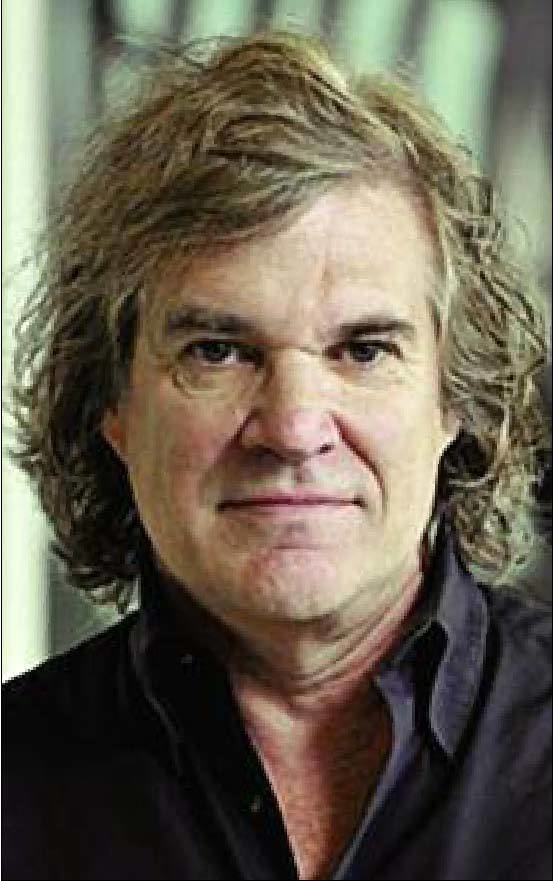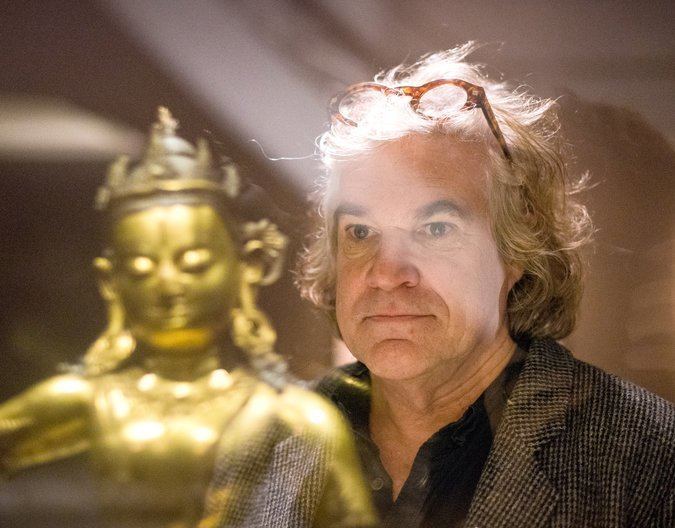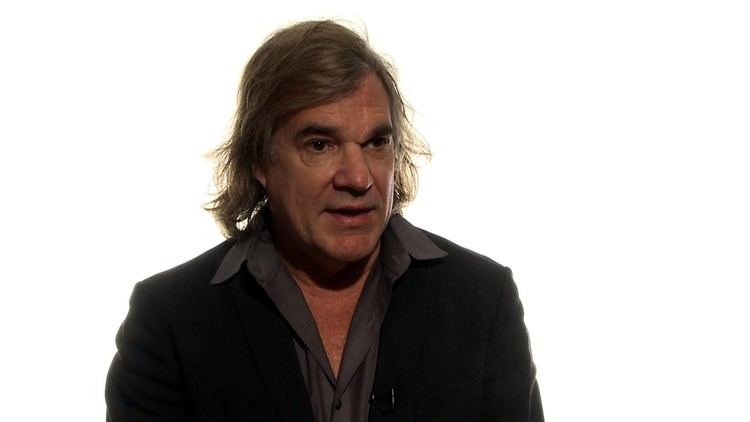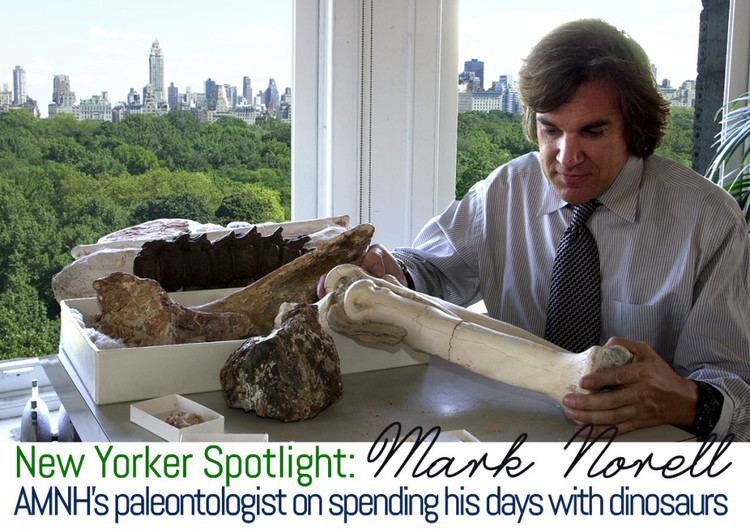Name Mark Norell | ||
 | ||
Born July 26, 1957 (age 68) St. Paul, Minnesota, United States ( 1957-07-26 ) Residence Manhattan, New York City, United States Alma mater Influences John Ostrom, Roy Chapman Andrews, Edward Drinker Cope Notable awards Orbis Pictus Award, Scientific American's Young Readers Book of the Year Award, New York City Leader of the Year Influenced by John Ostrom, Roy Chapman Andrews, Edward Drinker Cope Books Unearthing the dragon, Discovering dinosaurs, A nest of dinosaurs, Barnum Brown: The Man Who, Traveling the Silk Road: An | ||
Mark norell publishes new archaeopteryx findings
Mark A. Norell (born July 26, 1957) is an American paleontologist and molecular geneticist, acknowledged as one of the most important living vertebrate paleontologists. He is currently the chairman of paleontology and a research associate at the American Museum of Natural History. He is best known as the discoverer of the first theropod embryo and for the description of feathered dinosaurs. Norell is credited with the naming of the genera Apsaravis, Byronosaurus, Citipati, Tsaagan, and Achillobator. His work regularly appears in major scientific journals (including cover stories in Science and Nature) and was listed by Time magazine as one of the ten most significant science stories of 1993, 1994 and 1996.
Contents
- Mark norell publishes new archaeopteryx findings
- Profile mark norell
- Career
- Notable discoveries
- Honors and distinctions
- Recent publications
- References

Norell is both a fellow of the Explorer's Club and the Willi Hennig Society.

Profile mark norell
Career

Norell's research has encompassed a number of different areas, from the theoretical study of diversity through time, and his doctoral thesis of the evolutionary variations in maize. Following his M.S. at San Diego, Norell published papers on the efficacy of the fossil record in capturing phylogenetic history, and how missing data can influence the estimation of phylogeny.

Norell became a curator at the American Museum of Natural History in 1990 and helped oversee the renovation of the Halls of Vertebrate Evolution. The organization, where visitors progress in a circular motion around the floor, mirrors the evolutionary patterns of a phylogenetic tree. Thus, guests begin their exploration with the simplest vertebrates, placoderms and bony fishes, and conclude their visit with advanced mammals, such as mammoths and artiodactyls.

Currently, Norell studies relationships of small carnivorous dinosaurs to modern birds and develops new ways of observing fossils through CT scans and imaging computers. He has led over twenty international paleontological expeditions, in locales such as Patagonia, Cuba, the Chilean Andes, the Sahara and West Africa. The famous Mongolia project, which has delivered numerous discoveries in vertebrate evolution, has received world-wide attention.
Notable discoveries
Mark Norell is the direct discoverer of the enigmatic theropod Shuvuuia, co-led the group that discovered Ukhaa Tolgod, the richest Cretaceous terrestrial vertebrate fossil locality in the world, discovered the first embryo of a theropod dinosaur, described a series of dinosaurs with feathers, and discovered the first direct evidence of dinosaur brooding. Norell's theoretical work has a focus of data evaluation in large cladistic sets, as well as fossil pattern estimation through phylogeny, in order to see trends in diversity and extinction. He has authored several papers that discuss the relationship between stratigraphic position and phylogenetic topology.
Honors and distinctions
In 1998, Norell was named a New York City Leader of the Year by the New York Times. In 2000, he was honored as a distinguished Alumnus of California State University Long Beach. His popular science book, Discovering Dinosaurs, won Scientific American's Young Readers Book of the Year Award. Another of his books for the general public, entitled A Nest of Dinosaurs, was given an Orbis Pictus Award by the National Council of Teachers.
